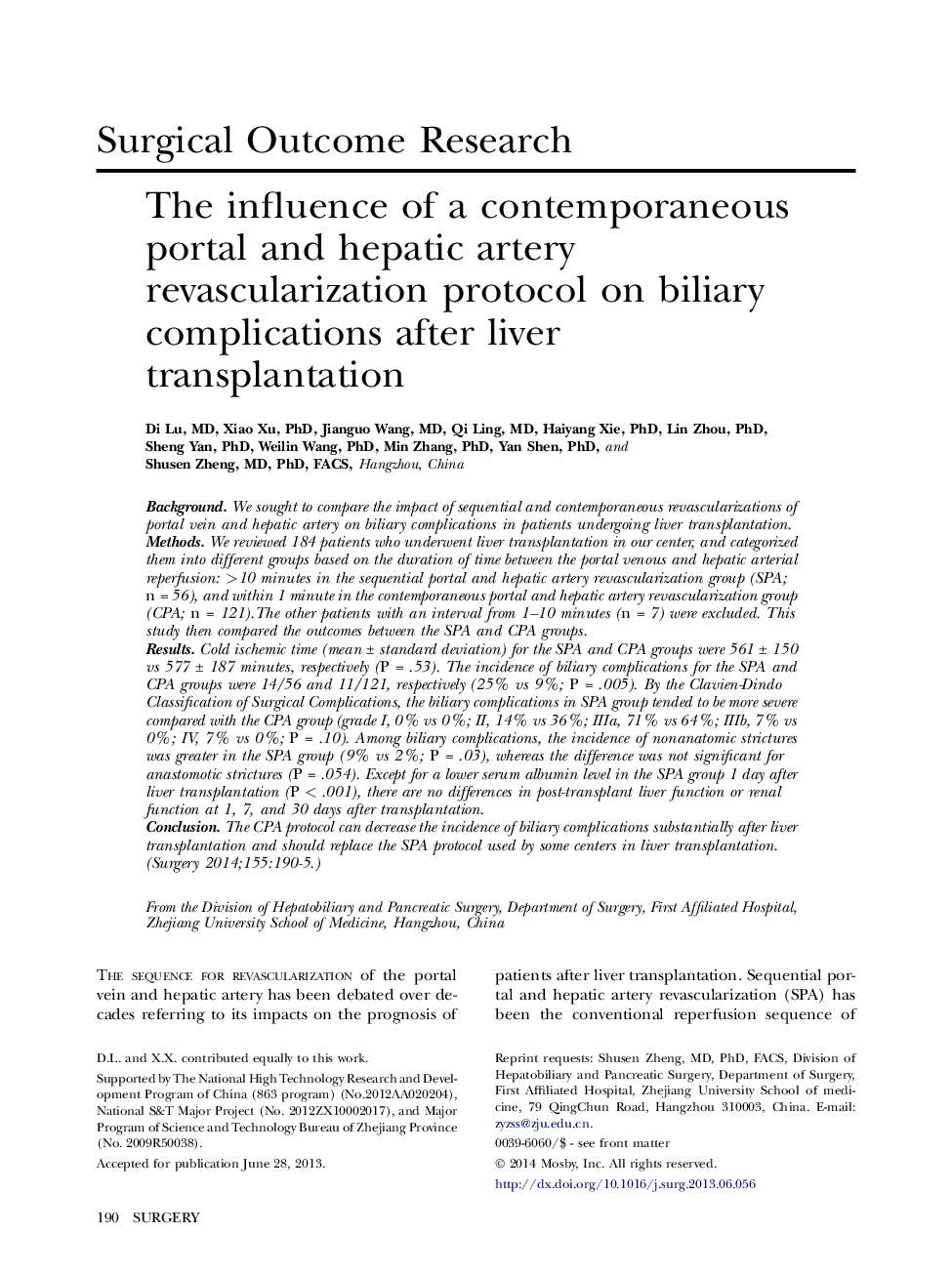| کد مقاله | کد نشریه | سال انتشار | مقاله انگلیسی | نسخه تمام متن |
|---|---|---|---|---|
| 4306874 | 1289232 | 2014 | 6 صفحه PDF | دانلود رایگان |
BackgroundWe sought to compare the impact of sequential and contemporaneous revascularizations of portal vein and hepatic artery on biliary complications in patients undergoing liver transplantation.MethodsWe reviewed 184 patients who underwent liver transplantation in our center, and categorized them into different groups based on the duration of time between the portal venous and hepatic arterial reperfusion: >10 minutes in the sequential portal and hepatic artery revascularization group (SPA; n = 56), and within 1 minute in the contemporaneous portal and hepatic artery revascularization group (CPA; n = 121).The other patients with an interval from 1–10 minutes (n = 7) were excluded. This study then compared the outcomes between the SPA and CPA groups.ResultsCold ischemic time (mean ± standard deviation) for the SPA and CPA groups were 561 ± 150 vs 577 ± 187 minutes, respectively (P = .53). The incidence of biliary complications for the SPA and CPA groups were 14/56 and 11/121, respectively (25% vs 9%; P = .005). By the Clavien-Dindo Classification of Surgical Complications, the biliary complications in SPA group tended to be more severe compared with the CPA group (grade I, 0% vs 0%; II, 14% vs 36%; IIIa, 71% vs 64%; IIIb, 7% vs 0%; IV, 7% vs 0%; P = .10). Among biliary complications, the incidence of nonanatomic strictures was greater in the SPA group (9% vs 2%; P = .03), whereas the difference was not significant for anastomotic strictures (P = .054). Except for a lower serum albumin level in the SPA group 1 day after liver transplantation (P < .001), there are no differences in post-transplant liver function or renal function at 1, 7, and 30 days after transplantation.ConclusionThe CPA protocol can decrease the incidence of biliary complications substantially after liver transplantation and should replace the SPA protocol used by some centers in liver transplantation.
Journal: Surgery - Volume 155, Issue 1, January 2014, Pages 190–195
